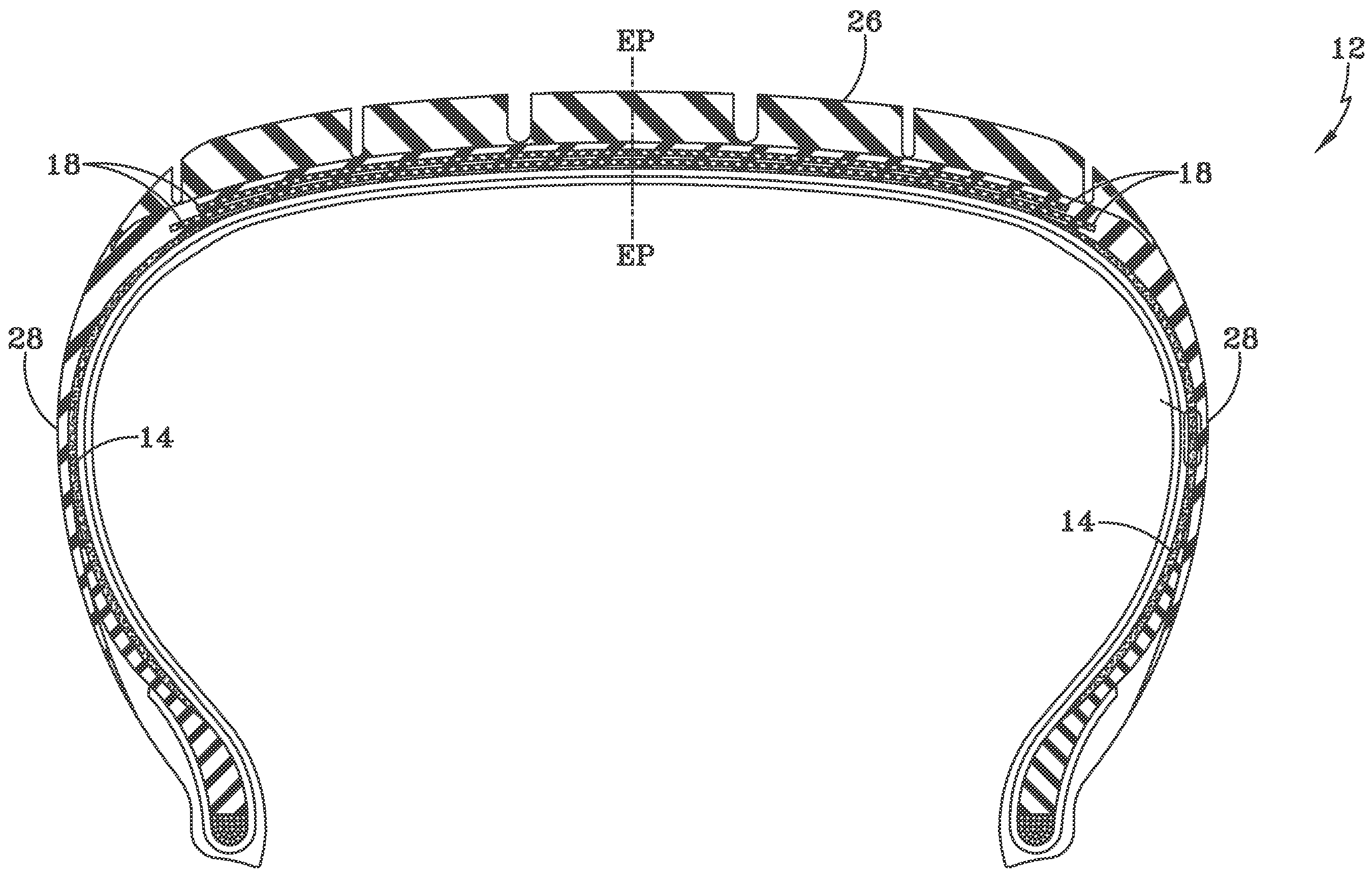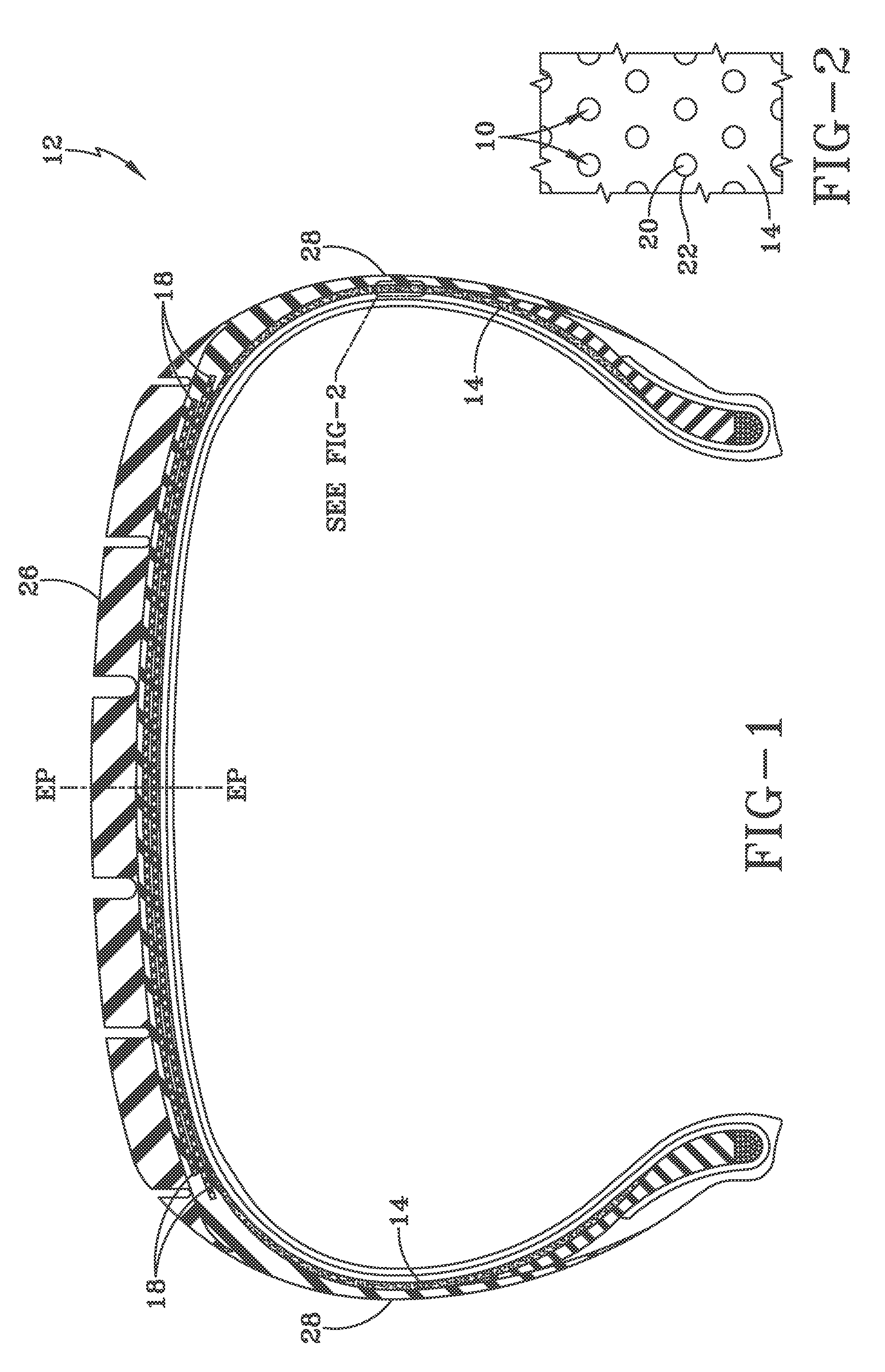Self-healing materials and use thereof for extending the lifespan of a tire
a technology of self-healing materials and tires, which is applied in the field of self-healing materials and use thereof for can solve problems such as tire cracks, and achieve the effect of extending the lifespan of tires
- Summary
- Abstract
- Description
- Claims
- Application Information
AI Technical Summary
Benefits of technology
Problems solved by technology
Method used
Image
Examples
example
[0030]Polypropylene, which melts at about 140° C., was heated and blended with a desired amount of sulfur in a twin-screw extruder so as to provide a 60% by weight mixture of sulfur in polypropylene. The mixture was allowed to cool then ground to produce particles of about 1000 μm in size. Although not specifically microencapsulated, this self-healing material, i.e., the particles, contained sulfur that was encapsulated by polypropylene. These particles were mixed and compounded with a standard rubber mix of (a) 100 parts by weight per hundred parts (phr) rubber; (b) 40-60 phr carbon black; (c) 0-30 phr oil; (d) 2-5 parts zinc oxide; (e) 1-3 part stearic acid; (f) 1-3 parts anti-oxidant (g) 1-5 phr sulfur; and (h) 0-5 phr ultra accelerator and accelerators. The compounding involved two successive preparation phases. The first phase or step defined a non-productive stage, which involved compounding of the rubber and filler at temperatures up to about 160° C. The second step defined a...
PUM
| Property | Measurement | Unit |
|---|---|---|
| healing temperature | aaaaa | aaaaa |
| temperature | aaaaa | aaaaa |
| healing temperature | aaaaa | aaaaa |
Abstract
Description
Claims
Application Information
 Login to View More
Login to View More - R&D
- Intellectual Property
- Life Sciences
- Materials
- Tech Scout
- Unparalleled Data Quality
- Higher Quality Content
- 60% Fewer Hallucinations
Browse by: Latest US Patents, China's latest patents, Technical Efficacy Thesaurus, Application Domain, Technology Topic, Popular Technical Reports.
© 2025 PatSnap. All rights reserved.Legal|Privacy policy|Modern Slavery Act Transparency Statement|Sitemap|About US| Contact US: help@patsnap.com


